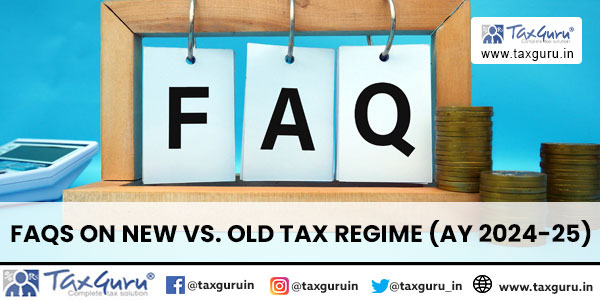Case Law Details
ITO Vs Raviraj Ventures (ITAT Pune)
ITAT Pune held that change in method of accounting cannot partake character of concealment. Accordingly, penalty under section 271(1)(c) of the Income Tax Act not leviable.
Facts- A search u/s 132 of the Act was conducted in the case of the assessee on 29/08/2016. During the course of search, it was noticed that the ongoing project ‘Aurete’ at Pimple Saudagar, Pune has been substantially completed and sales have been executed, but revenue has not been recognized by the assessee. During the course of search, certain documents were found at the business premises i.e., at Millenium Tower, Pune. One of the loose papers was a certificate issued by the Architect. Mr. Ravindra Sakla, partner of the assessee was confronted with the said loose papers.
After the search, assessee had filed revised return on 17/10/2016 declaring total income at Rs.4,61,02,130/-. After the search, the assessee filed return in response to notice u/s 153A declaring total income at Rs.4,61,02,130/-.
AO initiated proceedings u/s 271(1)(c) of the Act. AO invoked explanation 5A of s.271(1) of the Act and levied penalty of Rs.1,59,55,025/-. Aggrieved by the order of the AO, assessee preferred an appeal before the ld.CIT(A). The ld.CIT(A) deleted the addition.
Conclusion- In this case the difference in the return of Income is only because of Method of Accounting. It is not disputed that assessee was following Project Completion Method which was allowed for AY 2016-17. Therefore, the explanation submitted by the assessee for the difference in the original return of income and return filed after the search is a valid reason.
A legal claim or change of opinion cannot partake character of concealment. Section 43CB has been inserted w.e.f. 1/4/2017. Hence Section 43CB is not applicable to the year under consideration. Revenue has raised a ground that Assessee had violated law by not following AS-7 method of Accounting, however, it was never, a compulsory method for the year under consideration. Hence, there is no violation qua AS-7.
Therefore, we agree with the Ld. CIT(A) that Penalty u/s 271(1)(c) is not sustainable.
FULL TEXT OF THE ORDER OF ITAT PUNE
This appeal filed by the Revenue is directed against the order of ld.Commissioner of Income Tax(Appeals), Pune-11, dated 30.06.2022 emanating from the order of the ACIT, dated 30.11.2018 under section 271(1)(c)of the Income Tax Act, 1961 for the A.Y.2016-17. The Revenue has raised the following grounds of appeal:
“1. The CIT(A) erred both on facts and in law in passing the order.
2. The CIT (A) erred in law as well as on facts by deleting the penalty u/s 271(l)(c) of the I.T. Act, 1961 of Rs.1,59,55,025/-levied by the AO towards furnishing inaccurate particulars of income for not following recognization of revenue as per AS-9, as the assessee had violated the law by not following percentage of completion method (POCM) as prescribed by ICAI in AS-7.
3. For these and such other reasons as may be urged at the time of hearing, the order of the CIT(A) may be vacated and that of the Assessing Officer be restored.”
4. The appellant craves, leave to add, amend, alter or delete any of the above grounds of appeal during the course of appellate proceedings before the Hon’ble Tribunal.”
Brief facts of the case:
2. A search u/s 132 of the Act was conducted in the case of the assessee on 29/08/2016. During the course of search, it was noticed that the ongoing project ‘Aurete’ at Pimple Saudagar, Pune has been substantially completed and sales have been executed, but revenue has not been recognized by the assessee. During the course of search, certain documents were found at the business premises i.e., at Millenium Tower, Pune. One of the loose papers was a certificate issued by the Architect. Mr. Ravindra Sakla, partner of the assessee was confronted with the said loose papers. The relevant part of the statement of Mr. Ravindra Sakla recorded u/s. 132(4) of the Act is as under:-
Q.24) You are requested to go through page nos. 110 & 111 of the Loose Bundle 11 which is seized during the course of search. Please identify the contents.
Ans: Sir there are currently two projects that are going on. One is Project “Crossroads” at wakad and other is “Project Aurete” at Pimple Saudagar. To get an idea of the overall progress of the projects, we had hired Shri Vikas Achalkar, Architect to inspect the above said projects and submit his certificate. Accordingly, he had submitted the report April 2016 which is seized by you as page nos. 110 & 111 of the Loose Bundle No. 11.
Q.25. As per aforesaid certificates, the Architect has certified that approximately 45% and 37% work is completed in Projects “Crossroads” and Project “Aurete” respectively. In view of these facts, please state whether corresponding revenue has been recognized.
Ans: Sir, the Project “Crossroads” is being constructed by the firm Shri Raviraj Pashankar Developers and Project “Aurete” is being constructed by Raviraj Ventures. We do maintain the books of accounts of both the firms on day to day basis. On going through the tentative Profit and Loss Account of the above said firms by FY 2015-16, it is clear that no revenue has been recognized by these firms w.r.t. aforesaid projects.
Q.26) It is evident from the aforesaid certificates given by the architect w.r.t. projects “Crossroad” and “Aurete” that the aforesaid projects have crossed the threshold limit as prescribed in Accounting Standard notified by ICAI for recognizing the revenue. However, you have not recognized any revenue w.r.t. aforesaid projects. Please explain.
Ans: Sir, we have been regularly following project completion method of accounting. We were not aware of the fact that the revenue w.r.t. aforesaid project should have been recognized after crossing the threshold limit as prescribe in the accounting standards notified by ICAI. However, after consulting our taxation experts, we realize that considering the stage of completion of the projects mentioned above, the revenue should have been booked.
2.1 The assessee had filed its original return u/s. 139(1) of the Act on 03/08/2016 declaring total income of Rs.NIL. After the search, assessee had filed revised return on 17/10/2016 declaring total income at Rs.4,61,02,130/-. After the search, the assessee filed return in response to notice u/s 153A declaring total income at Rs.4,61,02,130/-.
2.2 The Assessing Officer initiated proceedings u/s 271(1)(c) of the Act. Assessing Officer gave opportunity to the assessee. The Assessing Officer invoked explanation 5A of s.271(1) of the Act and levied penalty of Rs.1,59,55,025/-. Aggrieved by the order of the AO, assessee preferred an appeal before the ld.CIT(A)-11, Pune. The ld.CIT(A) deleted the addition. The relevant part of the ld.CIT(A)’s order is reproduced here as under:-
“11.2 While levying the penalty, the Assessing officer has relied on the Explanation 5A and the fact that the return was revised after the search. However, as per the penalty order, the material found during the search was the certificate issued by the Architect regarding the progress of the project. There is no finding in the penalty order that the seized documents indicate that the appellant had claimed any inadmissible expenses or received any unaccounted sale receipts, etc. As per the statement recorded u/s 132(4) of the Act, the architect’s certificate only indicates that the project was complete beyond the threshold limit, prescribed in the guidelines for applying the percentage completion method of accounting. Thus, the seized document only suggests that the conditions for applying the percentage completion method are being fulfilled. However, as discussed above, whether the appellant was mandatorily required to follow percentage completion method’ for the year under consideration, remains a debatable issue.
11.3 Considering the totality of facts of the case and the judicial position, I am of the considered view that if the appellant agreed to recognize revenue by following the ‘percentage completion method’ and revised its return of income, same shall not attract the levy of penalty u/s 271(1)(c)of the Act because it cannot be said that the appellant furnished inaccurate particulars of its income or concealed the particulars of its income. Accordingly, the penalty u/s 271(1)(c) of the Act as levied by the Assessing Officer is directed to be deleted. The ground no.1 raised by the appellant is ALLOWED.”
Aggrieved by the order of the ld.CIT(A), the Revenue is in appeal before this Tribunal.
Submission of ld.DR:–
3. Ld.DR relied on the order of the AO. Ld.DR explained that assessee had not shown the income in original return filed u/s 139(1) of the Act. Only after the search, when specific document, i.e., certificate of the architect was found, the assessee admitted that assessee had not disclosed its correct income. The partner of the assessee admitted the same fact in statement recorded u/s. 132(4) of the Act. Till date, assessee has not retracted the said statement. Assessee filed return in response to notice u/s. 153A showing the total income at Rs.4,61,02,130/-. As per explanation 5A to s.271(1)(c), the concealment is deemed. Explanation-5A is a deeming provision. Once there is a difference in the income shown in the original return filed u/s.139(1) and income shown in response to notice u/s 153A, as per explanation 5A, the concealment is deemed. Therefore, in this case, as per explanation 5A there is deemed concealment.
Ld.AR submissions:-
4. Ld.AR filed paper book. Ld.AR explained that assessee was following project completion method. Therefore, assessee had shown NIL income in the original return filed u/s 139(1) of the Act. After the search, to buy peace of mind, assessee offered the income under percentage competition method. Therefore, there is no concealment. The assessee was following recognized method of accounting i.e. project completion method. Therefore, by not following percentage completion method, which is another method of accounting, assessee has not concealed anything. However, when two views are possible, penalty is not maintainable. The LD.AR submitted that no addition has been made by the AO and the AO has accepted the returned income. The LD.AR also submitted that the assessee had immediately filed revised return before the issue of notice u/s 153A. Hence, there is no concealment.
4.1 Ld.AR relied on the following case-laws:-
(i) CIT v. Neeraj Jindal [2017] 79 taxmann.com 96 (Del)
(ii) CIT v. Suraj Bhan [2007] 159 Taxman 26 (P & H)
(iii) M.J. Housing v. CIT[2013] 38 taxmann.com 203 (Mad)
(iv) CIT v. Rajkumar Gulab Badgujar [2019] 111 taxmann.com 257 (SC)
(v) Paras Buildtech India (P) Ltd. v. CIT [2017] 80 com 335 (Del)
(vi) CIT v. Taneja Developers & Infrastructure Ltd. [2021] 435 ITR 122 (Del)
(vii) Trident Estate (P) Ltd. v. ITO[2021] 127 com 360 (Mum. – Trib.)
(viii) Krish Infrastructure (P) Ltd. v. ACIT [2013] 35 com 38 (Jaipur – Trib.)
(ix) Ajay Traders v. DCIT [2017] 81 com 463 (Jaipur – Trib.)
Findings and Analysis:
5. In this case there was a search u/s 132 of the Act in the case of the assessee on 29/08/2016. The assessee is a builder. Assessee had filed Original Return u/s 139(1) of the Act on 03/08/2016, declaring total Income at NIL. It is an admitted fact that assessee was following Project Completion Method. The project completion method was a recognized accounting method for the year under consideration. The assessee for the year under consideration had a choice either to follow Project Completion Method or Percentage completion method, the assessee chose Project Completion Method. During the search, architect’s report was found which only explains the percentage of completion of the project. However, the assessee u/s 132(4) statement accepted to offer the income under Percentage Completion Method and accordingly offered additional income. The assessee immediately after Search filed a revised return of Income u/s 139(5) on 17/10/2016, showing Total Income of Rs. 4,61,02,130/-, which was processed u/s 143(1) on 28/04/2017. It means the department has accepted the revised return of the assessee. Subsequently on receipt of notice u/s 153A, the assessee filed a return showing Total Income of Rs. 4,61,02,130/- on 31/05/2017. Thus, the Total Income shown in the revised return and Return filed in response to notice u/s 153A is same. The AO passed assessment order u/s 143(3) rws 153A on 04/05/2018 accepting the Total Income of the assessee of Rs.4,61,02,130/-. The AO initiated Penalty u/s 271(1)(c) of the Act. The AO levied Penalty u/s 271(1)(c) of the Act invoking explanation 5A . The AO levied Penalty only on one ground that the assessee offered additional income only because of search. Though the assessee had explained that assessee was following Project Completion Method. We are aware that explanation 5A to Section 271(1) has introduced the deeming fiction. However, in this case the difference in the return of Income is only because of Method of Accounting. It is not disputed that assessee was following Project Completion Method which was allowed for AY 2016-17. Therefore, the explanation submitted by the assessee for the difference in the original return of income and return filed after the search is a valid reason. The ITAT Mumbai in the case of Trident Estate P Ltd vs ITO (supra) has held as under:
Quote, ”Thus, we note that completed contract method and percentage complete method both were recognised method of accounting for computation of gains from construction contract. Section 43CB was inserted by the Finance Act, 2018 w.e.f. 1-4-2017 which provides that profits and gains arising from a construction contract or a contract for providing services shall be determined on the basis of percentage of completion method in accordance with the income computation and disclosure standards. However, this section was not in existence and applicable in the assessment year 2014-15 which we are concerned with. Thus it is amply clear that percentage complete method and completed contract method were both acceptable method and accounting of construction contract in the impugned period. We note that the assessee has all along treated the said project as capitalised item and debited all the expenses to the capital account. This method has been accepted by the Revenue in the past. It is also undisputed that in the current year project is not at all complete. Redevelopment is still in progress. The assessee has also to recoup expenditure from other co-owners. Agreement to sale has not been registered, possession of the property has not been handed over. In these circumstances, assessee cannot be thrust upon percentage of completion method of accounting by the Assessing Officer. Hence, though we do not agree with the assessee that it is not a business project, we agree that the project is incomplete and in substance if assessee wishes to offer for taxation its gain on completion of project i.e. apply completed contract method the same cannot be rejected.” Unquote.
5.1 A legal claim or change of opinion cannot partake character of concealment. Section 43CB has been inserted w.e.f. 1/4/2017. Hence Section 43CB is not applicable to the year under consideration. Revenue has raised a ground that Assessee had violated law by not following AS-7 method of Accounting, however, it was never, a compulsory method for the year under consideration. Hence, there is no violation qua AS-7.
5.2 Therefore, we agree with the Ld. CIT(A) that Penalty u/s 271(1)(c) is not sustainable. Accordingly, all the grounds of appeal raised by Revenue are dismissed.
6. In the result, Revenue’s appeal is dismissed.
Order pronounced in the open Court on 15th May, 2023.
























